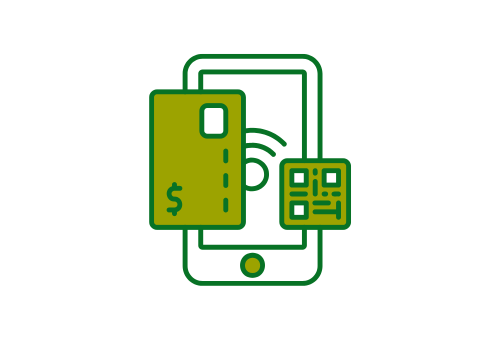Watch video summary
Schedule a Free Consultation Call Today
Discover how we can help you overcome, the latest payment challenges.
Introduction
The world is rapidly transitioning toward a cashless society, with digital payments becoming the norm. However, not everyone is on board. The digital divide in payments refers to the gap between those who have easy access to digital financial tools and those who are still reliant on cash transactions. This divide is influenced by several factors, including technological access, financial literacy, and economic disparities.
For businesses and financial institutions, ensuring inclusivity in digital payments isn’t just a social responsibility—it’s an economic necessity. At Facilero, we recognize that bridging the digital divide is essential to creating an efficient and accessible financial ecosystem where no one is left behind.
Understanding the Digital Divide in Payments
The adoption of digital payments varies widely across demographics, regions, and economic groups. While urban populations in developed economies have embraced digital transactions, many individuals and businesses in rural areas and developing nations continue to rely on cash.
Key Barriers to Digital Payment Adoption
Lack of Access to Technology
Many individuals, particularly in developing nations, lack access to smartphones, computers, or stable internet connections. Without these basic tools, digital payments remain out of reach.
Limited Financial Literacy
Even with access to technology, some consumers struggle to use digital payment systems due to a lack of knowledge or trust in financial institutions.
Economic and Banking Exclusion
Billions of people worldwide remain unbanked or underbanked. Without a bank account or financial history, accessing digital payment services is nearly impossible.
Concerns About Fraud and Security
Fear of online fraud, identity theft, and cybersecurity risks prevents many people from fully embracing digital transactions.
The Impact of the Digital Divide on Financial Inclusion
The inability to access digital payments has far-reaching consequences for individuals and businesses alike.
Economic Disadvantages
Consumers without access to digital payments often pay more for financial services. Cash transactions may involve higher fees, delays, and inefficiencies, while digital payments often come with cost-saving benefits such as lower transaction fees and instant transfers.
Social and Business Exclusion
As more businesses transition to digital-only payments, those who rely on cash face increasing exclusion. Many online retailers, service providers, and financial institutions now operate without physical cash handling, leaving some consumers without access to essential goods and services.
Higher Business Costs
For merchants, dealing with cash transactions means higher operational costs. Cash handling requires security, storage, and frequent bank deposits, whereas digital payments streamline accounting and reduce the risk of theft.
Strategies to Bridge the Digital Divide in Payments
Addressing the digital payment gap requires a multi-faceted approach that includes technology, education, and policy-making.
Expanding Access to Digital Infrastructure
• Governments and financial institutions must invest in broadband and mobile internet expansion to ensure that even remote areas have access to online financial services.
• Telecom providers and financial institutions should offer affordable smartphones and basic data plans tailored for financial transactions.
Enhancing Digital and Financial Literacy
• Educational programs must teach individuals how to use digital wallets, mobile banking, and online payment systems.
• User-friendly payment platforms should be designed with accessibility in mind, ensuring intuitive interfaces that require minimal financial expertise.
Developing Low-Cost Digital Payment Solutions
• Payment providers should focus on low-fee digital payment options that allow unbanked individuals to participate without incurring excessive costs.
• Governments can incentivize businesses to accept alternative digital payment methods, such as QR codes or mobile money, which don’t require traditional banking services.
Building Trust in Digital Transactions
• Strengthening cybersecurity measures and providing fraud protection can alleviate concerns about financial security.
• Offering consumer protections, such as refund policies and dispute resolution mechanisms, encourages trust in digital payments.

The Role of Governments and Financial Institutions
Bridging the digital payment gap isn’t just the responsibility of private payment providers—governments and financial regulators must also play a role in ensuring widespread adoption.
Regulatory Support for Digital Inclusion
• Governments can introduce financial inclusion policies that require banks and fintech companies to develop solutions for unbanked populations.
• Subsidies and tax incentives can be provided to businesses that adopt digital payment methods, helping transition cash-heavy economies toward digital transactions.
Public-Private Partnerships for Payment Accessibility
• Collaboration between fintech companies, banks, and mobile network operators can lead to innovative solutions that expand digital payment accessibility.
• Microfinance institutions can leverage digital tools to provide small loans and financial services to underserved communities.
Conclusion
The digital divide in payments is a significant challenge, but it is not an insurmountable one. By addressing technological, financial literacy, and security concerns, businesses and financial institutions can work together to ensure that digital payments are accessible to all.
How Can Facilero Help You?
Comprehensive Payment Solutions for Every Business
In today’s fast-moving digital economy, businesses need efficient, secure, and scalable payment solutions to stay competitive. Payment processing isn’t just about transactions—it’s about streamlining operations, enhancing customer experiences, and improving financial security. Whether you’re managing high-volume payments or looking to expand internationally, choosing the right payment provider is critical.
At Facilero, we understand that every business has unique needs. From seamless online transactions to robust fraud protection, the right payment partner should offer a solution that integrates smoothly with your business model.
Secure and Reliable Payment Processing
Security is a top concern for businesses and customers alike. As digital transactions grow, so do the risks of fraud, chargebacks, and compliance issues. Modern payment solutions must prioritize security without sacrificing speed or convenience.
Optimized Transactions for Better Efficiency
A slow or inefficient payment process can drive customers away and impact revenue. Businesses need payment solutions that offer fast approvals, high success rates, and smooth fund settlements. Whether you’re handling one-time payments or recurring billing, the goal is to minimize friction at checkout.
Enhancing Customer Experience with Smart Payment Options
Customers expect flexibility and convenience when making payments. Offering multiple payment methods, mobile-friendly checkouts, and instant processing can dramatically improve customer retention and satisfaction.
Global Expansion with Localized Payment Support
For businesses looking to expand internationally, supporting local payment preferences is crucial. Many consumers in different regions prefer specific payment methods, currencies, and banking systems.
Scalable and Customizable Payment Solutions
No two businesses are alike, and a one-size-fits-all payment approach doesn’t work. Businesses should have access to customized payment processing features that align with their industry requirements.
Contact us now and let us help take your business to the next level!
Get A Free Consultation
Book a free call with us to discuss how we can help you expand in new regions, scale, and get the cash flowing in your business.





